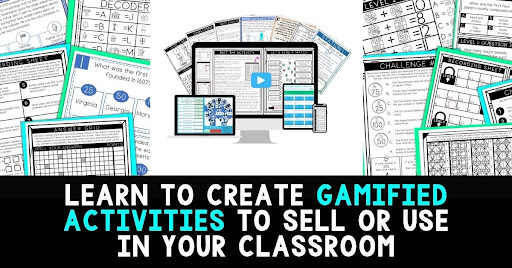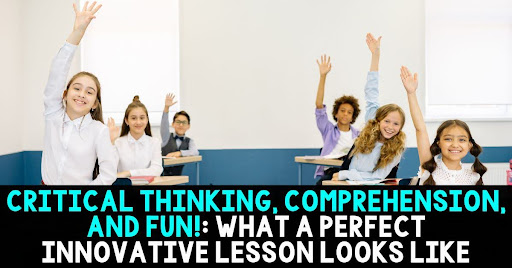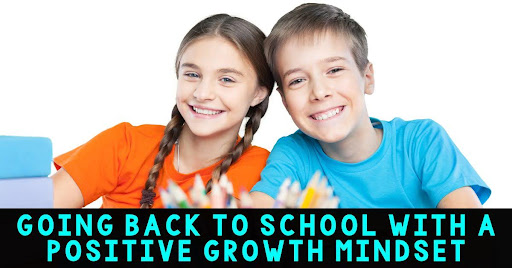Student Centered Learning and Cooperative Groups
Even though I’ve spent over 15 years in the classroom teaching middle school science and social studies, I’ve never forgotten that one (awful) observation with my principal early in my teaching career.
I spent the entire class period lecturing to my students. To be honest, at that time I was terrified to allow group work or activities in case the kids got totally off topic, started misbehaving, and general out-of-control chaos would ensue.
At my review, my principal told me I sounded “somewhat robotic” which was his way of nicely saying “SUPER BORING.”
I knew things had to change, but I couldn’t figure out how!
I was working exhaustingly long hours, and I still couldn’t get my kids interested or engaged.
Until I discovered student-centered learning and an element of mystery.
What a RELIEF to find out that I didn’t have to do all the work! Even better, my students started thinking and working independently. Win-win!
Today if I get an unexpected observation, I say Bring It On!
Mindset over Method
In their e-book on the topic of student centered learning, Jacobs et al. explain that this educational approach is not simply a method a teacher adopts. Rather, It is a mindset or paradigm that a teacher uses to approach the work of learning. Each decision a teacher makes during the planning process presents an opportunity to apply the paradigm of student centered learning. Let’s dive into what that paradigm entails.
Hallmarks of a Student Centered Classroom
The primary question a teacher must ask to apply a student centered mindset is “How can I put the students in charge of their learning?” Whenever possible, we want to provide students the chance to take ownership of not only their learning but also the learning process. The first hallmark of a student centered classroom is active learning. Jacobs et al. explain, “student centered simply means that students become more active, not just in doing learning activities,[…], but also in thinking about and in shaping their own learning” (xiii). Moving students into an active role ensures that learning is actually happening because the students are constructing the learning alongside the teacher instead of passively receiving information. The best learning occurs when activities are interactive with students moving around and engaging multiple senses (Lisciandrello “The 6 Signs). For teachers who have a teacher-centered classroom, this will require work to rearrange your activities, but the rewards far outweigh the costs. As students become more engaged, classroom management needs lessen and the speed at which students cover material increases.
The second hallmark of a student centered classroom is collaboration. Utilizing groups for instruction and practice allows students to spend more time actively learning, and students often learn better from a knowledgeable peer than from the instructor (Lisciandrello “3 Effective”). Successful implementation of groups requires explicit teaching on group work practices and expectations, but again the payoffs are well worth the effort. Collaborative learning allows the teacher to focus on students who need extra attention and avoids the problem of students waiting to receive help because peers serve as the first source of aid.
Another benefit of collaborative groups is actually the third hallmark of a student centered classroom: social emotional learning. Because student centered classrooms require more participation and interaction, both with the instructor and between students, social emotional learning is integrated into these classrooms. Teachers will provide explicit instruction on collaborative skills that will also help students develop their social emotional skills. This type of learning is embedded into the student centered classroom because students are “engaging in active learning. Planning a long-term project, working in teams, and giving oral presentations all support social-emotional learning” (Lisciandrello “The 6 Signs”). Student centered classrooms work to educate the whole student through incorporating this kind of learning into the structure of the classroom.
Student voice is another indicator of a student centered classroom. Active participation in decision making and execution of learning provides ample opportunity for students to express their thoughts and opinions and to develop self-efficacy. Students who are frequently presented choices in the classroom show increased engagement and reduced boredom. Keep reading for ways to incorporate more choice!
One strategy for implementing student centered learning into your classroom is to incorporate principles of Universal Design for Learning (UDL). The underlying core of these principles is that all students are given access to the material. Varied presentation methods, varied materials, engaging multiple learning styles, and varied forms of assessment are paired with cognitive supports. Universal design allows students to make choices about the learning process without changing the content or skills being learned (TEAL Center Staff). Students are also given choices about how they demonstrate their learning, building their confidence and improving academic success. UDL puts the student at the center of the classroom by providing multiple avenues to learning.
Want to learn how to create your very own student centered activities? Add your name below to learn more about Teacher Template Toolbox!

Successful Cooperative Learning
The first step to achieving success in cooperative learning is to explicitly teach the skills you expect students to demonstrate in groups. Do not assume your students already know these. Even if they are proficient in all of them, explicit reminders and example verbiage ensures they are prepared to implement them in their groups. Get students involved in providing examples of these skills and talk about why each is essential to group success.
- “checking that group mates understand
- disagreeing politely
- seeking clarification
- asking for reasons
- praising and thanking others
- asking for suggestions” (Jacobs et al. 14).
Once you are confident students understand what skills you expect them to demonstrate, you can make those expectations even clearer by providing a rubric for group work. This rubric should be focused on the quality of group work rather than academic content (Lisciandrello “3 Effective”). As students work you can observe and rate group members on their performance, which will provide feedback for future group work. You could even set up conferences with students to discuss their group work strengths and areas for improvement.
When assigning tasks for group work, we must recognize that not all tasks are created equal. In order for collaborative groups to succeed, they need to face a challenge that is difficult enough that one student cannot complete it alone. This creates the right environment where students become interdependent and rely on one another to complete the task (Lisciandrello “3 Effective”). Not every task is going to be appropriate for group work. Set your students up for success by choosing these tasks carefully!
Utilize group structures if you need help getting started or like more structure. Jacobs et al. suggest beginning with pairs of students as you teach them about successful group work. Pairs require less classroom management because students often don’t have to move far to reach their partner, and pairs make it very hard for students to hide in their groups and not contribute. If you feel hesitant about collaborative groups, starting with quick paired discussions is a great way to begin. Pairs can also form the basis for other collaborative groups and structures. Write-Pair-Square is a structure where students first collect their own thoughts in writing. Then they turn and discuss with a partner. Finally, pairs group up in groups of four and further discuss their takeaways or understandings of the concept or question (Jacobs et al. 14). You can build up to this point. Starting small will help you address your students’ unique needs before placing them in larger groups.
If you want to take group structures even further, you can assign roles within groups. Assigning roles defines clear expectations for each individual in the group. Roles can help shy or introverted students engage in discussion because they know what is expected of them. Delegating responsibilities also ensures that all group members are actively participating in the work. These roles serve as “a supportive structure that promotes meaningful collaborative learning” (“Using Roles”). You can develop your own roles or use pre-established structures such as Kagan Cooperative Learning Structures or Process Oriented Guided Inquiry Learning (POGIL). The POGIL structure assigns the following roles, but you can always add additional ones to facilitate larger groups.
- “Manager or Facilitator: Manages the group by helping to ensure that the group stays on task, is focused, and that there is room for everyone in the conversation.
- Recorder: Keeps a record of those who were in the group, and the roles that they play in the group. The recorder also records critical points from the small group’s discussion along with findings or answers.
- Spokesperson or Presenter: Presents the group’s ideas to the rest of the class. The Spokesperson should rely on the recorder’s notes to guide their report.
- Reflector or Strategy Analyst: Observes team dynamics and guides the consensus-building process (helps group members come to a common conclusion)” (“Using Roles”).
Suggestions for other roles include encourager, questioner, and checker. Teach these roles explicitly to your students and provide examples of effective group members in each role. As instructional coach Jeff Lisciandrello explains, “Remember that your goal as a facilitator is to teach collaboration, not content. Once they master collaborative inquiry, they can learn new content faster than you could ever teach it” (“3 Effective”). You will truly be amazed at how well students help one another and how much engagement increases!
Try it!
Incorporate a partner discussion in tomorrow’s lesson. Take an open ended question you were already going to ask and turn it into a brief partner exchange. Use this as both a check for understanding and an informal assessment of your students’ collaboration skills.
Works Cited
Jacobs, George M., et al. Simple, Powerful Strategies for Student Centered Learning. E-book, Springer, 2016.
Lisciandrello, Jeff. “3 Effective Group Work Strategies for Your Classroom.” Room to Discover, https://roomtodiscover.com/group-work-strategies/. Accessed 1 Feb. 2023.
Lisciandrello, Jeff. “The 6 Signs of a Student-Centered Classroom.” Room to Discover, https://roomtodiscover.com/student-centered-classroom/. Accessed 2 Feb. 2023.
TEAL Center Staff. “Universal Design for Learning.” Teaching Excellence in Adult Literacy. https://lincs.ed.gov/sites/default/files/2_TEAL_UDL.pdf Accessed 2 Feb. 2023.
“Using Roles in Group Work.” Washington University in St. Louis, https://ctl.wustl.edu/resources/using-roles-in-group-work/. Accessed 1 Feb. 2023.





